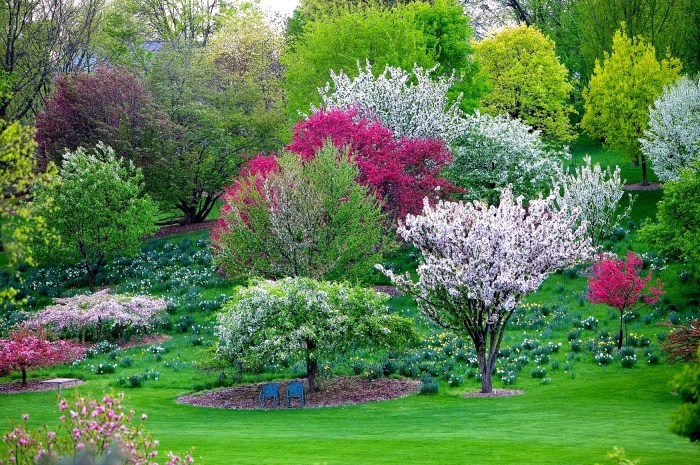Decorative Trees, whether real or artificial, add a touch of elegance and life to any space. From the lush greenery of a living Christmas tree to the meticulously crafted branches of an artificial bonsai, these elements significantly impact interior design and cultural expression. This guide delves into the diverse world of decorative trees, exploring their types, applications, care, cultural significance, and economic impact.
We’ll examine the materials used, the manufacturing processes involved, and the various ways these trees enhance our homes, workplaces, and public spaces. Prepare to discover the fascinating story behind these ubiquitous yet often overlooked decorative elements.
Uses and Applications of Decorative Trees

Decorative trees, encompassing artificial and meticulously crafted natural specimens, offer a versatile array of applications across diverse settings, significantly impacting aesthetics and ambiance. Their use extends beyond mere decoration, contributing to the overall mood and functionality of a space. The strategic placement and selection of these trees can dramatically enhance the visual appeal and psychological well-being of occupants.
The adaptability of decorative trees allows for seamless integration into various environments, enriching their visual appeal and contributing to a more welcoming atmosphere. Their impact is multifaceted, influencing both the visual perception and the emotional experience of the space.
Decorative Tree Applications in Different Settings
The utility of decorative trees spans a wide range of environments, each benefiting from their unique aesthetic and functional qualities. Careful consideration of the tree’s style, size, and overall design is crucial for achieving the desired effect.
- Homes: Decorative trees serve as focal points in living rooms, adding a touch of nature and sophistication. Smaller bonsai trees or potted artificial trees can enhance bedroom aesthetics, while larger, more dramatic specimens can be used as room dividers or statement pieces in open-plan living areas.
- Offices: Strategic placement of decorative trees in office spaces can reduce stress and enhance productivity. They can create a more calming and inviting atmosphere in reception areas, break rooms, or individual workspaces. The choice of tree type should reflect the corporate identity and desired atmosphere.
- Events: From weddings and corporate galas to holiday parties, decorative trees add a touch of elegance and festivity. Themed trees, adorned with specific decorations, can complement the event’s style and create a memorable atmosphere. The size and type of tree should be proportionate to the venue size.
- Public Spaces: Large-scale decorative trees can transform public spaces like shopping malls, hotels, and restaurants. They create visual interest, add a sense of grandeur, and contribute to a more inviting and welcoming environment. The choice of tree should align with the overall architectural design and the intended mood.
Psychological Impact of Decorative Trees on Interior Design and Ambiance
The presence of decorative trees in interior spaces has a demonstrable psychological impact, influencing mood, perception, and overall well-being. The integration of natural elements, even in artificial forms, fosters a connection with nature and creates a more serene and inviting atmosphere. Research suggests a positive correlation between exposure to greenery and reduced stress levels.
For example, studies have shown that the presence of plants in office environments can lead to increased employee satisfaction and improved productivity. Similarly, in healthcare settings, the incorporation of natural elements, including decorative trees, has been linked to faster patient recovery rates. The calming effect of greenery is widely acknowledged and contributes to a more positive and therapeutic environment.
Hypothetical Interior Space Design Incorporating Decorative Trees
Consider a modern, open-plan living area with high ceilings. To create a visually appealing and functional space, we can incorporate several types of decorative trees. A large, artificial fiddle-leaf fig tree, positioned in a corner near a large window, would serve as a natural focal point, drawing the eye upward and creating a sense of verticality. Its lush green foliage would complement the neutral color palette of the room.
Smaller, potted bonsai trees could be strategically placed on side tables and shelves, adding subtle touches of nature and texture to different areas. Finally, a delicate, flowering cherry blossom tree (artificial, for year-round enjoyment) could be placed near a seating area, creating a sense of tranquility and elegance. The varied heights and styles of the trees would add visual interest and prevent the space from feeling monotonous.
The overall effect would be a calming, sophisticated, and visually engaging space that seamlessly blends nature with modern design.
From the symbolism embedded in cultural traditions to the economic forces shaping the industry, decorative trees hold a multifaceted significance. Understanding their diverse applications, proper care, and environmental implications allows us to appreciate their beauty while making informed choices. Whether enhancing a home’s ambiance or celebrating a cultural event, the careful selection and placement of decorative trees can significantly impact the overall experience.
This exploration of decorative trees reveals their enduring power to bring beauty, meaning, and a touch of nature into our lives.